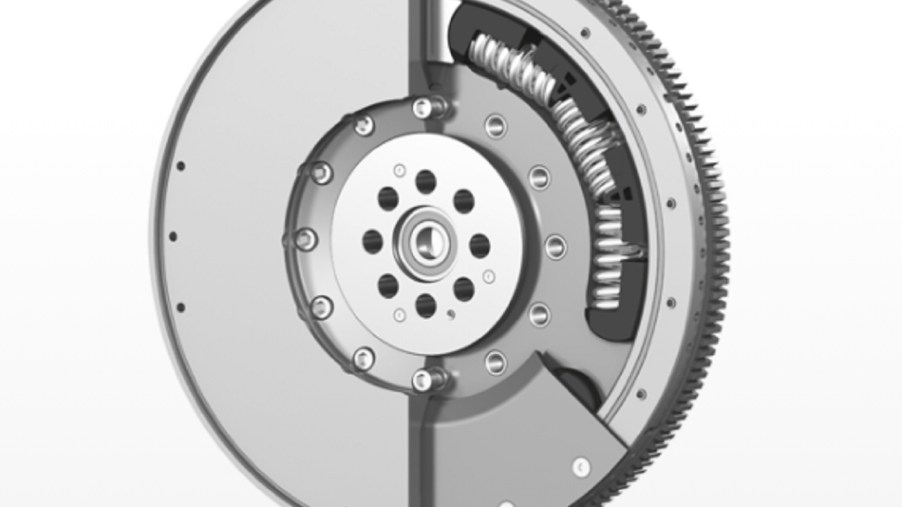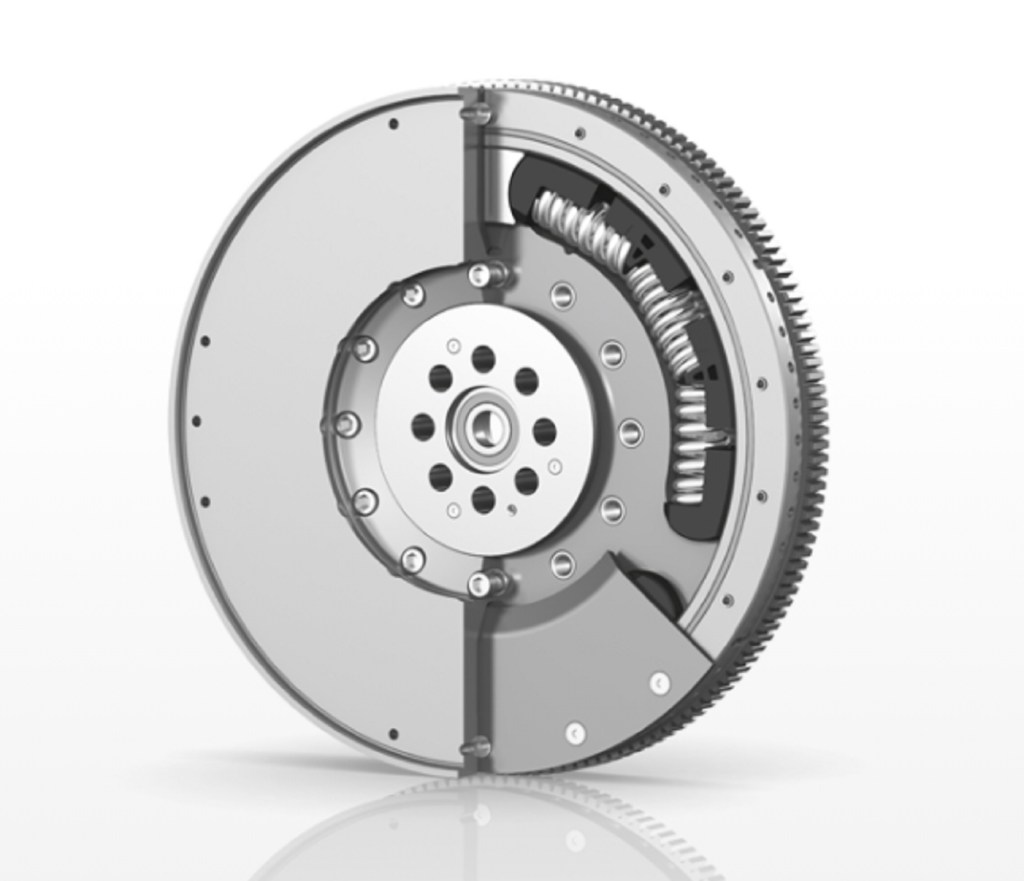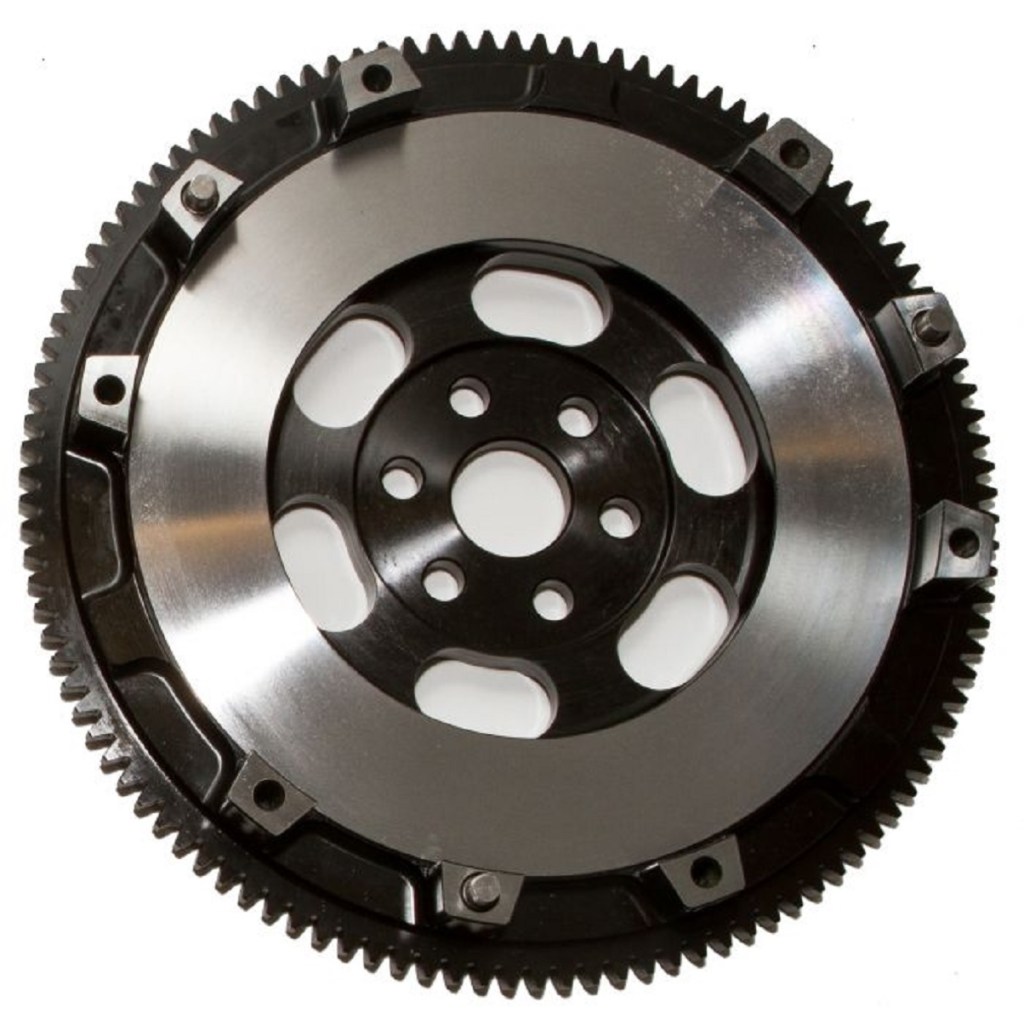
Is a Lightweight Engine Flywheel a Worthwhile Upgrade?
Adding more power via something like a turbocharger is a common-enough idea. But some modifications, rather than increasing raw performance, are about tweaking a car’s character in subtler ways. You can install a short shifter, for example, or swap your transmission’s gear ratios. Or you can give your car a lighter engine flywheel, or a dual-mass flywheel. But is that mod worth considering?
What does your engine flywheel do?
Before your engine’s power gets to the drive wheels, it has to pass through a differential and the transmission. And unless you drive a torque-converter automatic, there’s a clutch in-between the transmission and the engine. Connecting the transmission and the clutch plate is the flywheel attached to the engine crankshaft, AutoGuru and Car and Driver explain. The torque-converter-automatic equivalent is a flexplate, 2CarPros reports.
Whether you have a car or a motorcycle, an internal-combustion engine flywheel serves the same purpose, CarThrottle and Cycle World report. It’s a big metal disc that stores rotational energy as it spins. And while it takes some energy to get your engine flywheel spinning, it can also freely release that energy as needed. Say, for example, as you back off the throttle and coast to a light.
The flywheel, in short, makes sure your engine’s pistons keep moving smoothly. Not only does it conserve momentum, but it also dampens out unwanted vibrations, which reduces drivetrain stress. It also helps the engine start in the first place.
The engine flywheel is ringed with gear teeth that mesh with the starter motor, ItStillRuns reports. When you turn on the ignition, the starter motor uses the flywheel to rotate the pistons and start the combustion cycle.
Why would you want a lighter flywheel?
Having a heavier engine flywheel is sometimes beneficial, ItStillRuns reports. If your vehicle is working under heavy loads, say, pulling a trailer, a heavy flywheel prevents it from stalling. But if the goal is performance, extra weight, especially rotating extra weight, has to be removed.
Fitting a lighter engine flywheel has some drawbacks. While the engine can rev more easily, it also means revs drop quickly when you’re not accelerating. As a result, shifting and pulling away from a stop smoothly becomes more difficult. But it means your car or bike accelerates faster and reaches peak power more easily.

A great example of this behavior change is the 2016 Porsche 911 R, which used a single-mass flywheel instead of a dual-mass one.
What’s the difference between a single-mass and a dual-mass flywheel?
Mechanically, the Porsche 911 R is very similar to the contemporary GT3 RS. Only it has less sound-deadening material, fewer aero elements, fewer luxuries, and a manual transmission. And while a dual-mass flywheel was standard, Porsche also offered an optional single-mass one, Car and Driver reports.

Dual-mass and single-mass flywheels perform the same functions as a ‘conventional’ one, EEuroParts reports. However, they’re designed to increase the flywheel’s dampening abilities, albeit in different ways.
A dual-mass flywheel, as the name implies, has two masses connected by springs and bearings, PhoenixFriction explains. This increases dampening capability, which means smoother shifts and acceleration. Plus, it means less drivetrain and powertrain noise and less wear.
A single-mass flywheel, in contrast, doesn’t have anything between those two masses. Instead, it’s one big piece of metal. Hence the name ‘single-mass.’ The single-mass flywheel is lighter than the dual-mass one, which is why the 911 R “revs as though its pistons were made of helium,” MotorTrend reports. The downside is more noise and vibrations as well as potentially more drivetrain wear.
Should you install a lighter flywheel?
While a single-mass flywheel is noisier than a dual-mass one, the latter isn’t without its downsides. They’re less durable and more expensive. Plus, if it fails, you have to replace it, rather than resurface it. Which, if you’re OK with the extra NVH, is possible, PhoenixFriction reports.
As for fitting a lighter conventional engine flywheel, the same pros and cons apply. A lighter flywheel makes the engine more responsive, but it also means more drivetrain noise. And it makes your car or bike easier to stall.

That being said, if you plan to race your vehicle, it can be a worthwhile upgrade. It’s also not necessarily an expensive one; Flyin’ Miata has a lightweight Miata flywheel available for $349. But if you do plan on replacing your stock engine flywheel, it’s best to do it if you’re also working on your clutch. That’s because to get at the flywheel, you have to remove the transmission.
Follow more updates from MotorBiscuit on our Facebook page.


